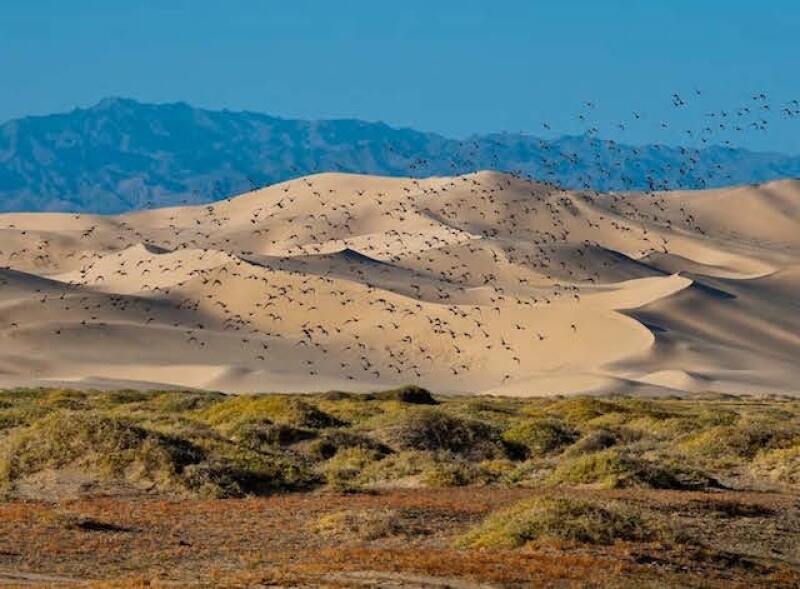The untouched landscapes and glimpses of nomadic life are reason enough to want to visit Mongolia. But there’s a unique itinerary from Nomadic Expeditions this summer that could inspire you to put the country at the top of your travel checklist. Mongolia: Spiritual and Cultural Awakening is a rare look at the country’s Buddhist roots, thanks to an illustrious pair of hosts: Tibet House founder and renowned scholar Robert Thurman, the first Westerner to be ordained as a monk by the Dalai Lama, and Mongolia-born Baasan Lama, the head abbot of Erdene Zuu, Mongolia’s oldest monastery. On a two-week itinerary that will include central Mongolia and the Gobi Desert, the group will also stop at Erdene Zuu to meet Baasan Lama; they’ll also take part in guided meditations with him at his own hilltop retreat. We asked Baasan Lama to give us a backgrounder on his country’s complex relationship with Buddhism and to share his thoughts on the importance of compassion during even the most tumultuous times.
This interview was translated in part by Jalsa Urubshurow, founder of Nomadic Expeditions.
What makes Mongolia such a unique place to visit?
Mongolia is beautiful and untouched. I’ve traveled the world and haven’t found a place that feels more wild and spiritual. A lot of other countries are cutting down trees and killing animals and insects. That isn’t happening as fast in Mongolia.
What should we know about Buddhism in Mongolia?
Mongolia has been a democratic country since 1990, so everyone can practice religion freely now. But during our 70-year socialist period, many monks were imprisoned or killed, and others hid or fled the country. A lot of people buried their Buddha statues, often in places like outhouses where nobody would go looking for them. Before communism, there were 100,000 monks and 2,000 monasteries. Today, there are around 3,000 monks and 250 monasteries.
Wow—what was it like before 1990? Did you have any family members who were monks?
I was born and raised near Erdene Zuu monastery, which was a museum because Buddhism was forbidden back then. My grandfather was a monk, and I remember when I was a child he had a secret room underground where he kept Buddhist sutras and thangkas. At midnight he’d go down there to pray and meditate.
When did you decide to become a monk?
It was when I visited Erdene Zuu for the first time, when I was 10 years old. I felt I was in a place that was really familiar. I felt at home there. I eventually became a monk in 1991, one year after the fall of communism. At that time, many of the older monks who lived under communist rule had already passed away. These days, you still see mostly younger monks. I became the head abbot of Erdene Zuu 10 years ago when I turned 30.
What’s your average day like?
You have to memorize a lot of text. When I first became a monk, it was a 40-minute walk between my home and the monastery, and on the way I’d memorize 12 rows of Sanskrit. We spend most of the day chanting, praying for the good of humanity, and there aren’t really any days off. When I’m not at the monastery, I do volunteer work, and I also have a small school for young monks.
Do you live at the monastery?
None of us live at Erdene Zuu because it’s still a museum and because most of it was destroyed. About 80 percent of the monks there are married—many of them were already married when they became monks after communism fell.

Baasan Lama, the head abbot of Erdene Zuu, Mongolia’s largest and oldest monastery.
Courtesy of Nomadic Expeditions
It sounds like a tough transition. How do young Mongolians view Buddhism today?
The next generation of Mongolians sees Buddhism as an old religion that their grandparents believed in. The rituals seem superstitious, and young people don’t understand the meaning behind them. Because of this, Buddhism is on the decline in Mongolia. That’s why I’m traveling and giving lectures. I focus on teaching about compassion and love, which is more universal, rather than the “ism” of Buddhism. I spoke to 20,000 people in Mongolia in the last year, and I also traveled to the U.S. and Europe to speak to Mongolians living abroad.
Tell us about your monastery, which Nomadic Expeditions guests will be visiting.
Erdene Zuu was built in the 16th century. It was the first monastery in Mongolia, and it’s also the largest. It’s just over 200 miles southwest of the capital, Ulan Bator, near Karakorum, the ancient capital city founded by Genghis Khan in the 13th century. Most of it was destroyed during communist rule, and only three of the 62 temple buildings survive.
What do you want to teach the travelers you meet?

The Gobi Desert, Mongolia
Courtesy of Nomadic Expeditions
If I can help people find love and compassion from within themselves, of course I’ll be very happy. All of our suffering is dependent on our thoughts and emotions and anger, as well as our ego and self-centeredness. Meditation is what teaches you how to master these thoughts. If you don’t have love or compassion inside yourself first, then you have nothing to give others. Society is made of families, and a family is made of individuals, so if you change yourself, your family will be changed, and then society will change, too. It’s like getting on an airplane: You need to put your oxygen mask on first before helping the person next to you.











